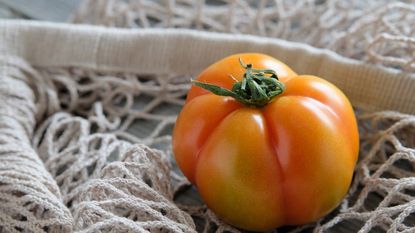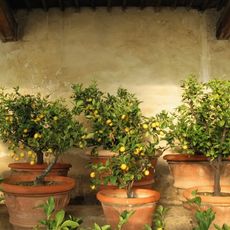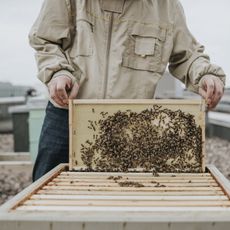History Of Golden King Of Siberia Tomatoes


A wise man once said there are more varieties of tomatoes than there are stars in the sky....Okay, no one ever said that, but sometimes it really feels true. At least the variety in the tomato kingdom is translated into some real diversity - if you have an idea of the kind of tomato you want, odds are you can find it. The Golden King of Siberia has its own quirks that are almost always met with rave reviews by gardeners.
History of Golden King of Siberia Tomatoes
The history of Golden King of Siberia tomatoes is a tricky one of transportation and translation. In Russia, its country of origin, the Golden King of Siberia doesn't actually exist. Instead, you can buy two distinct varieties: Korol Sibiri (King of Siberia) and Zolotoy Korol (Golden King). The seeds made their way to Baker Creek Heirloom Seeds in America and, when test grown, were determined to be similar enough to be packaged as the same variety and named with a kind of portmanteau of the two original names. This was in 2010. So, are the Golden King of Siberia seeds we can buy now predominantly King of Siberia, or Golden King, or still a mix of the two? No one really knows. But that shouldn't stop you from growing heirloom tomatoes like these!
Golden King of Siberia Plant Info
Golden King of Siberia tomato plants are big, yellow, and heart-shaped. They're pretty low in acidity as tomatoes go, and lots of people describe the flesh as downright sweet. Because of this, they're fantastic straight off the vine, eaten just like an apple (my personal favorite way to eat a tomato). But they're also big, low in seed, and super prolific, making it hard not to cook with them. The vines are indeterminate, but as indeterminates go, they're very well behaved, usually keeping to a short bush-like form. They handle heat well and are somewhat disease resistant.
Gardening tips, videos, info and more delivered right to your inbox!
Sign up for the Gardening Know How newsletter today and receive a free download of our most popular eBook "How to Grow Delicious Tomatoes."

The only child of a horticulturist and an English teacher, Liz Baessler was destined to become a gardening editor. She has been with Gardening Know how since 2015, and a Senior Editor since 2020. She holds a BA in English from Brandeis University and an MA in English from the University of Geneva, Switzerland. After years of gardening in containers and community garden plots, she finally has a backyard of her own, which she is systematically filling with vegetables and flowers.
-
 Want a Backyard Mini Orchard? Create Your Own Container Orchard
Want a Backyard Mini Orchard? Create Your Own Container OrchardEasier to care for in small spaces, a backyard mini-orchard makes sense for busy gardeners and juicy fruit is the reward.
By Teo Spengler
-
 Urban Beekeeping Guide: Top Tips For Raising Bees In The City
Urban Beekeeping Guide: Top Tips For Raising Bees In The CityUrban beekeeping can be a rewarding and appreciated pastime, but first be sure it’s legal in your city and learn the ropes of beekeeping.
By Mary Ellen Ellis